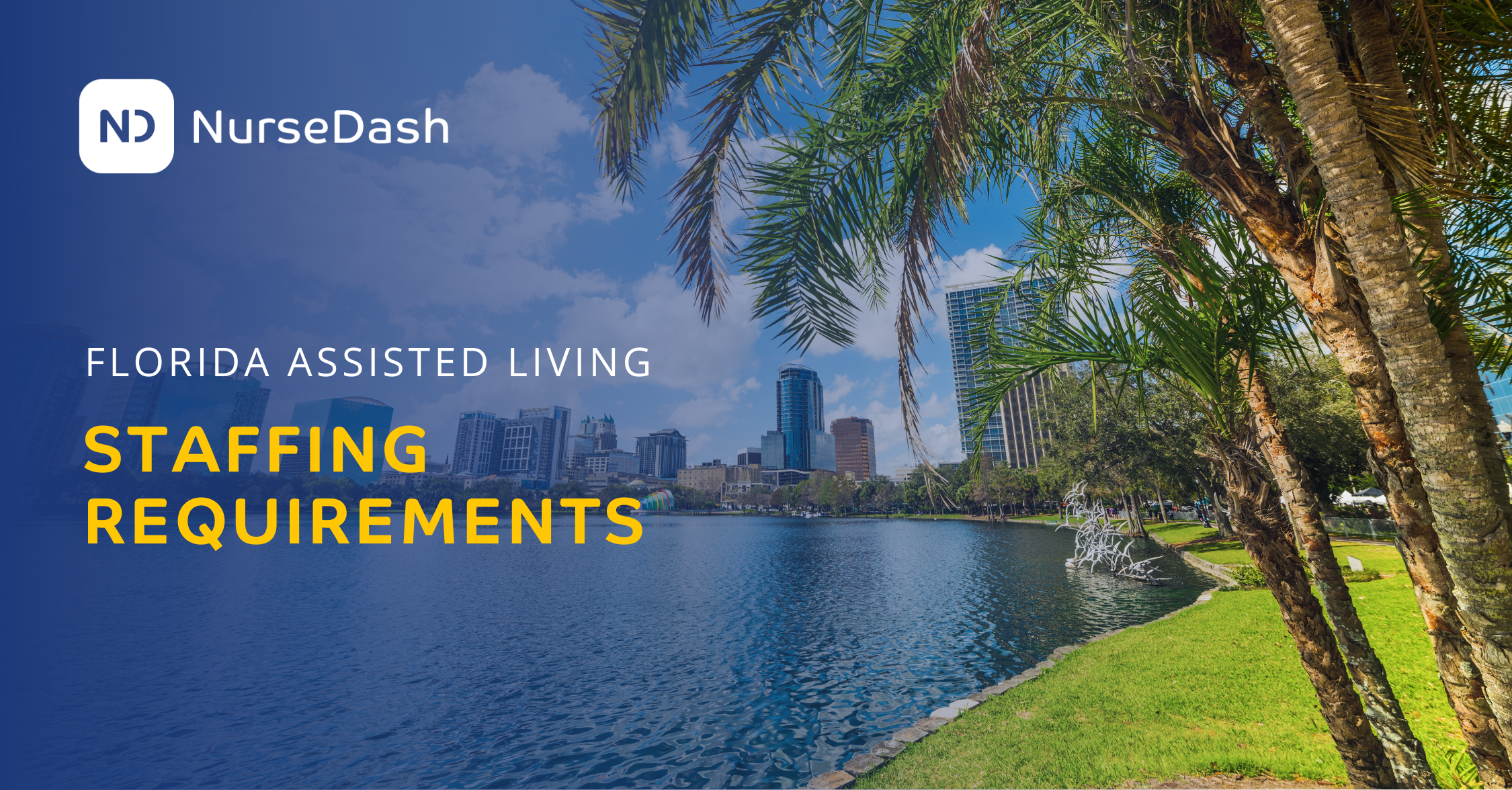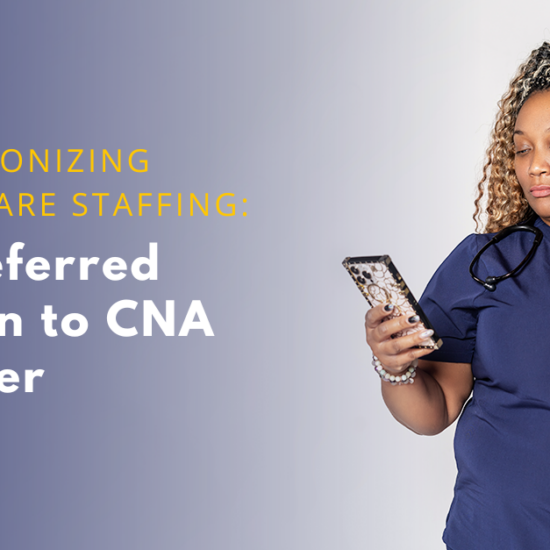Florida Assisted Living: Staffing Requirements and Regulations
Florida Assisted Living: Staffing Requirements and Regulations
Operating a senior care facility in Florida comes with its own set of regulations and challenges, with staffing shortages being one of the most critical concerns faced by administrators and directors of nursing. Due to an overall lack of regulations, nurse staffing agencies have been able to operate without many of the same protections and standards that are required for healthcare facilities.
NurseDash is a revolutionary healthcare staffing solution and trusted partner in bridging the employment gap, helping long-term facilities connect with vetted and skilled healthcare professionals. By revolutionizing the traditional staffing model, NurseDash is on a mission to combat understaffing through ethical, transparent practices that prioritize the well-being of facilities and professionals alike.
As the population of seniors continues to grow in Florida, the demand for assisted living facilities has increased substantially. To ensure the safety and well-being of elderly residents, the state has established specific requirements and regulations for assisted living facilities. In this blog post, we will explore the key state regulations and requirements that administrators and directors of nursing must be aware of to operate an assisted living facility in Florida successfully.
Florida Staffing Requirements
Source ALFBoss
(a) Minimum staffing:
- Facilities must maintain the following minimum staff hours per week:
| Number of Residents, Day Care Participants, and Respite Care Residents | Staff Hours/Week |
| 0-5 | 168 |
| 6-15 | 212 |
| 16- 25 | 253 |
| 26-35 | 294 |
| 36-45 | 335 |
| 46-55 | 375 |
| 56- 65 | 416 |
| 66-75 | 457 |
| 76-85 | 498 |
| 86-95 | 539 |
For every 20 total combined residents, day care participants, and respite care residents over 95 add 42 staff hours per week.
- Independent living residents, as referenced in subsection 59A-36.015(3), F.A.C., who occupy beds included within the licensed capacity of an assisted living facility but do not receive personal, limited nursing, or extended congregate care services, are not counted as residents for purposes of computing minimum staff hours.
- At least one staff member who has access to facility and resident records in case of an emergency must be in the facility at all times when residents are in the facility. Residents serving as paid or volunteer staff may not be left solely in charge of other residents while the facility administrator, manager or other staff are absent from the facility.
- In facilities with 17 or more residents, there must be at least one staff member awake at all hours of the day and night.
- A staff member who has completed courses in First Aid and Cardiopulmonary Resuscitation (CPR) and holds a currently valid card documenting completion of such courses must be in the facility at all times.
- Documentation of attendance at First Aid or CPR courses pursuant to subsection 59A-36.011(5), F.A.C., satisfies this requirement.
- A nurse is considered as having met the course requirements for First Aid. An emergency medical technician or paramedic currently certified under chapter 401, part III, F.S., is considered as having met the course requirements for both First Aid and CPR.
- During periods of temporary absence of the administrator or manager of more than 48 hours when residents are on the premises, a staff member who is at least 21 years of age must be physically present and designated in writing to be in charge of the facility. No staff member shall be in charge of a facility for a consecutive period of 21 days or more, or for a total of 60 days within a calendar year, without being an administrator or manager.
- Staff whose duties are exclusively building or grounds maintenance, clerical, or food preparation do not count towards meeting the minimum staffing hours requirement.
- The administrator or manager’s time may be counted for the purpose of meeting the required staffing hours, provided the administrator or manager is actively involved in the day-to-day operation of the facility, including making decisions and providing supervision for all aspects of resident care, and is listed on the facility’s staffing schedule.
- Only on-the-job staff may be counted in meeting the minimum staffing hours. Vacant positions or absent staff may not be counted.
(b) Notwithstanding the minimum staffing requirements specified in paragraph (a), all facilities, including those composed of apartments, must have enough qualified staff to provide resident supervision, and to provide or arrange for resident services in accordance with the residents’ scheduled and unscheduled service needs, resident contracts, and resident care standards as described in rule 59A-36.007, F.A.C.
(c) The facility must maintain a written work schedule that reflects its 24-hour staffing pattern for a given time period. Upon request, the facility must make the daily work schedules of direct care staff available to residents or their representatives.
(d) The facility must provide staff immediately when the agency determines that the requirements of paragraph (a) are not met. The facility must immediately increase staff above the minimum levels established in paragraph (a), if the agency determines that adequate supervision and care are not being provided to residents, resident care standards described in rule 59A-36.007, F.A.C., are not being met, or that the facility is failing to meet the terms of residents’ contracts. The agency will consult with the facility administrator and residents regarding any determination that additional staff is required. Based on the recommendations of the local fire safety authority, the agency may require additional staff when the facility fails to meet the fire safety standards described in rule chapter 69A-40, F.A.C., until such time as the local fire safety authority informs the agency that fire safety requirements are being met.
- When additional staff is required above the minimum, the agency will require the submission of a corrective action plan within the time specified in the notification indicating how the increased staffing is to be achieved to meet resident service needs. The plan will be reviewed by the agency to determine if it sufficiently increases the staffing levels to meet resident needs.
- When the facility can demonstrate to the agency that resident needs are being met, or that resident needs can be met without increased staffing, the agency may modify staffing requirements for the facility and the facility will no longer be required to maintain a plan with the agency.
(e) Facilities that are co-located with a nursing home may use shared staffing provided that staff hours are only counted once for the purpose of meeting either assisted living facility or nursing home minimum staffing ratios.
(f) Facilities holding limited mental health, extended congregate care, or limited nursing services license must also comply with the staffing requirements of rules 59A-36.020, 59A-36.021 or 59A-36.022, F.A.C., respectively.
Move away from Agency, ease your staffing struggles with NurseDash
Tired of price gouging, lack of visibility, and inconsistent shift-filling? You’re in the right place. NurseDash is a technology solution created by a team experienced in the healthcare industry. As your partner in shift-filling, we provide total transparency, and autonomy to choose the best NDPros for your shifts and hire full-time without any hidden fees
NurseDash offers a variety of features to help Florida ALFs with staffing needs, including:
- Save More Money, Make More Money
- Say goodbye to staffing markups when you fill shifts with NurseDash. Facilities that use NurseDash see an average 30% savings over a traditional staffing agency.
- Vetted, Reliable Healthcare Professionals
- All of our NDPros on the platform are screened for background, licensing, and credentials. Once they are on the platform, NurseDash has a rigorous rating system to ensure that only the best are filling your shifts. Meet a NDPro that you want to keep coming back for your shifts? No problem! NurseDash allows you to save favorites for future, so they receive shift invites before anyone else.
- Dedicated Support Team
- We’re here for you whenever, wherever. We play an active role in ensuring your experience with NurseDash is exceptional.
- Control Your Rates
- You’re in complete control when it comes to pay. Our AI-powered platform guides you through suggested pay options in your area to get the shift filled as quickly as possible, providing you with the option to post at that amount or customize to your preferences.
We’re on a mission to combat understaffing through ethical, transparent practices that prioritize the well-being of facilities and professionals alike. Contact our team now to get your facility fully-staffed.





